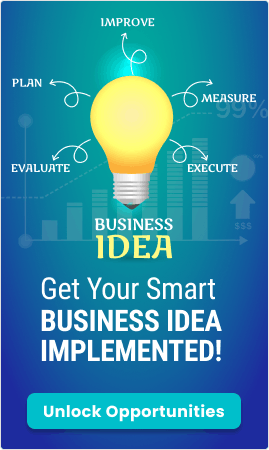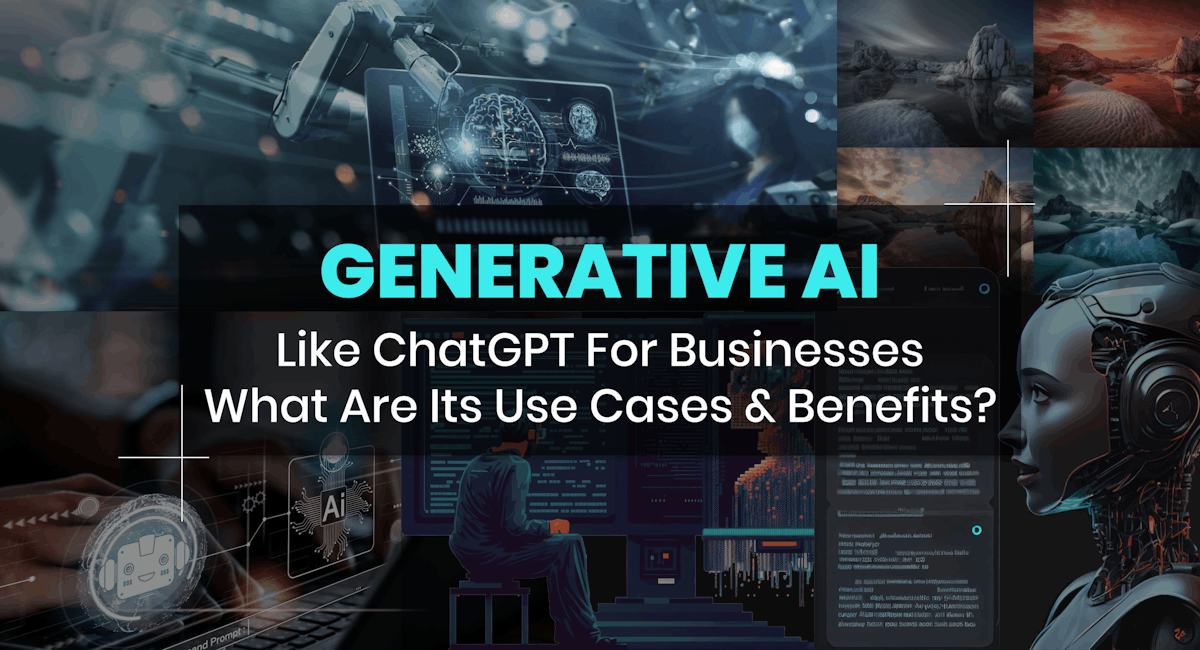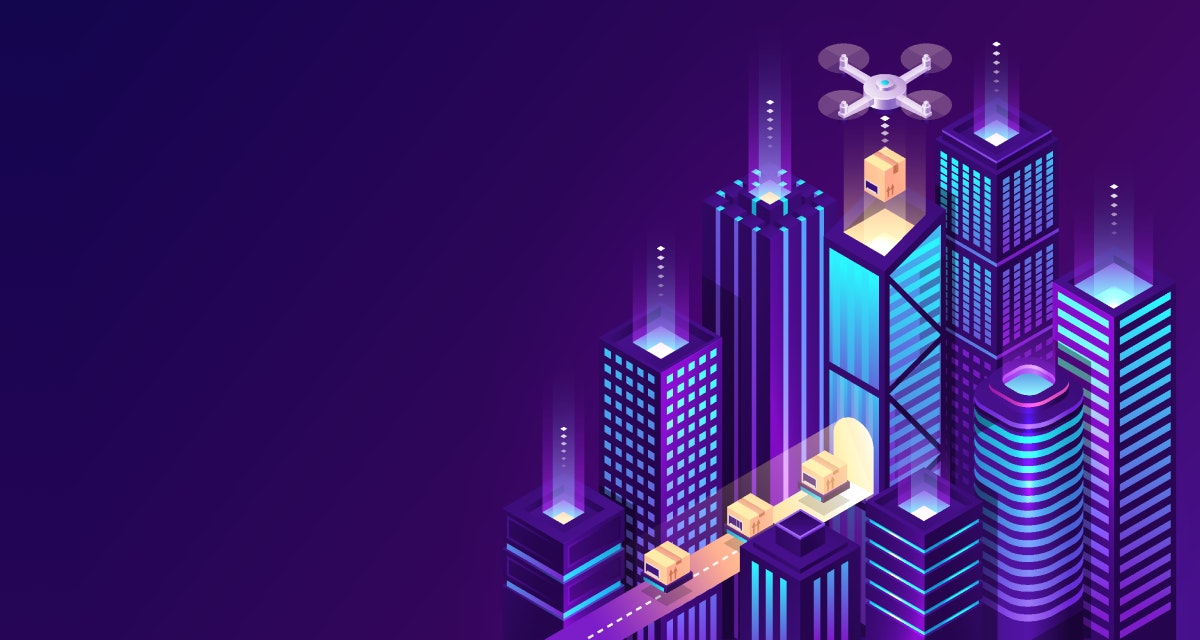Table of Content
AI chatbots: unlocking potential for smarter business operations
The business infrastructure is growing at flash speed. In the past decade, numerous trends and technologies have elevated the business competition so much that almost every company faces a run for its money at certain times. Technologies like AI, Big Data, 5G, IoT, and many others are key promoters of business growth.
One of the technologies that have significantly impacted the business landscape is chatbots, aka AI chatbots.
So, if you plan to harness the capabilities of an AI chatbot for your business, partnering with a reputable AI development company is essential—read this guide carefully.

What is an AI chatbot?
A chatbot is a software program. It can simulate human-like conversations using artificial intelligence. It can process both text and voice inputs while understanding intent. AI Chatbots utilise large amounts of data that are processed using machine learning and natural language processing (NLP).
Using these data sets and user interactions, the bots continuously improve. Some of the prominent use cases include customer support, sales, and automation. They can also answer queries, offer recommendations, and handle transactions. Businesses wondering how to create AI chatbot can choose pre-built solutions or custom development based on their needs.
AI chatbots can integrate with apps, websites, and messaging platforms. This can make interactions seamless and enhance user experience. It can also reduce response times from virtual assistants to automated helpdesks.
Efficiency and customer engagement rank high in the prioritisation list. In recent years, demand for customised AI chatbot development has been increasing. For example, businesses can integrate chatbots with the existing framework.
They can create AI chatbots that can offer round-the-clock customer service. It can also assist in automating routine tasks. These aspects can help lower overhead costs. Valuable customer behavioural data can be collected to make informed decisions.

Key Components for Successful AI Chatbot Development
As easy as it may seem to give the command to a chatbot and get the desired result, the actual work is much more complex in the backend. The working of an AI chatbot has numerous technologies and components backing it. Let’s take a look at those components!
The UI components
A clean, easy-to-use interface helps users navigate conversations effortlessly—whether through buttons, quick replies, or free-form text input. Technically, this involves integrating UI frameworks (like React or Vue) and ensuring responsiveness across devices.
Error handling, fallback responses, and visual cues (like typing indicators) help create a more human-like, reassuring interaction.
Everything related to what a user sees and experiences comes in UI components. UI components include
- The user interface has all the visual components like buttons, text boxes, fields, etc.
- The user experience component includes the way things happen on the screen, like the navigation, animations, etc. Anything that improves the feel of the website.
- Conversation design is the third and the most crucial UI component. It focuses on developing the part about how the chatbot is going to interact or communicate with the users. The elements of a conversation design are flow and scripting. The flow part further includes context, entities, and intent that decide what the chatbot will say. The scripting part develops the chatbot's personality (like how the chatbot says something). In short, the conversation design includes uncovering conversation paths, responses, and fonts.
The functional components
The functional components behind an AI chatbot are much trickier than the UI components. Here are the functional components of the AI chatbot!
- Natural language processing is the most critical part of an AI chatbot. Generative AI and NLP help the chatbot understand user inputs, whether it is text or voice.
- Machine learning algorithms ensure that the chatbot is trained on the data. It is done via supervised and unsupervised learning.
- The knowledge base is the information repository that holds the information required by the chatbot to answer user queries. It can be product information, FAQs, etc.
- Dialogue management is another functional component of the AI chatbot. Dialogue management checks the flow of the conversation while taking care of the context, intents, and responses.
Ensuring Data Privacy, Security, and Compliance
Behind every successful chatbot is a secure infrastructure. Sensitive user data should be encrypted both in transit (via TLS/SSL) and at rest. Additionally, ensure authentication mechanisms (OAuth, JWT, etc.) are in place for session management. Adherence to compliance standards like GDPR, HIPAA, or CCPA is vital, especially when operating in regulated industries like healthcare or finance.
Building for Scalability and Performance
Leverage cloud-native services (like AWS Lambda, Azure Bot Service, or Kubernetes for container orchestration) so the chatbot can continue delivering fast, accurate responses. Caching frequent queries, load balancing across servers, and using scalable databases like MongoDB or PostgreSQL are important to keep response times low, even during peak usage.
Deploying Across All Key User Touchpoints
Make your chatbot available wherever your customers are—on your website, mobile app, or messaging platforms like WhatsApp or Facebook Messenger. Utilize SDKs and APIs specific to each channel while maintaining a unified backend logic. Webhooks, middleware layers, and chatbot engines like Dialogflow or Rasa can help streamline this cross-platform experience.
Optimizing Through Ongoing Updates and Training
AI chatbots are never truly “finished.” Regular model retraining using new conversation logs and user feedback helps improve intent recognition and contextual accuracy. Tools like TensorFlow, PyTorch, or spaCy can power custom NLP models, while platforms like IBM Watson allow easy training via interface. Incorporate analytics dashboards to monitor metrics like user satisfaction, fallback rates, and completion rates.
Generative AI Apps & Solutions Development Services Company
Explore nowHow to make an AI chatbot from scratch
When it comes to developing AI chatbots, you usually have three options
- Develop a custom chatbot
- Build a chatbot using ready-to-use tools
- The right amalgamation of both the above-listed options
Here are the step-by-step guide to developing an AI chatbot that help you create the right conversational flow and build a robust AI chatbot. Let’s begin the journey.

Step 1: Define chatbot purpose and use cases
AI chatbots can be used for different purposes and use cases. So the first step is to be very specific about your precise purpose and use cases for developing the bot. To understand your needs, you need to answer the questions listed below.
- What is your ultimate purpose for developing a chatbot? Do you want to improve customer experience, generate leads, automate customer support, or anything else? Your purpose could be one or a combination of multiple objectives.
- What are the most common chatbot use cases in your business and industry? Identify the use cases by checking for the queries you receive and evaluating potential examples in your domain.
- What are the essential features that you want to incorporate in the chatbot? You can decide on must-have features based on your business needs.
Once you have answers to the first two questions, it will be easy to define the features and type of chatbot you want to build.
Step 2: Decide a channel where you want to launch it
The next important step is to decide the channel where you want to integrate and use the chatbot. Ensure integrating it across every platform, where your customers frequently interact with your brand. The most common platforms that you should consider are
- Website
- Mobile Application
- Social media platforms like WhatsApp, Facebook Messenger, etc.
If you are confused about picking the right channels, here are some tips to consider
- You must integrate the chatbot on your website and mobile app as customer interactions happen frequently on these channels. People prefer to connect with you directly to get help with their queries.
- Large-scale companies have a large customer base that interacts with their brand through different channels. In such cases, deploying the chatbot on multiple channels is the right approach.
If you are a multi-national brand, you need to set the tone, style, and content of the chatbot by considering target audiences from multiple regions.
Step 3: Select the AI model or framework for your chatbot
Now that you have clarity about which chatbot variant you want to create and for what channels. The next step is to select the right technology stack. It is suggested to get help from experts to make the right decision.
- Ready-to-use AI builders are available in the market that allows to build a chatbot with the required customization. It's a less time-consuming approach.
- To build a bot with AI frameworks, you can consider platforms like Microsoft Bot, Google Dialogflow, IBM Watson, etc.
- You can develop a chatbot by leveraging cloud platforms like Microsoft Azure, AWS, IBM Cloud, Google Cloud Resources, and other platforms. It helps deploy, manage, and scale your machine learning workload and NLP engine.
- Using AI and ML platforms, you can build an AI chatbot from scratch. The platform offers various libraries and resources including Pyourch, Tensorflow, Scitkit, Pre-trained language models, Langchain, LLamIndex, PineCone.io, and more.
Step 4: Build a knowledge base
To make the AI chatbot smarter, you need to feed it with intelligent insights. It can learn and train itself using that data or knowledge base. If you are looking for where to get this information? You can consider three options that involve
- Internal Data
- Public Datasets
- Generated Data
Step 5: Design a user-friendly chatbot interface
Using drag-and-drop building blocks, you can design the conversation flow for the chatbot. It allows you to create chat sequences that meet your specific business needs.
For example; if you are an eCommerce company, you can set the sequence of sending a welcome message, asking for which product they are looking for, sharing the particular product page, sending a message that helps the customers to make a decision, and sending a discount message if applicable.
This is the basic conversational sequence that you can consider. Ensure to mention that they are using the AI chatbot. Also, add the clause of your website's privacy policy to avoid future conflicts.
Step 6: Train and fine-tune your AI chatbot
Companies that are opting for simple chatbots, developed using decision tree flows, do not need to train their product. When you need to understand the customer intent, you need to train the chatbot by adding an NLP trigger.
By training the bot, you can analyze the most common customer conversations, queries, and concerns. Adding the answer manually or using a tool will help you respond to their questions faster and more effectively.
Step 7: Integrate the chatbot and conduct rigorous testing
Once you are done with fine-tuning the AI chatbot, you can integrate it into your defined channels. To check whether it works smoothly, you need to test the chatbot.
You can receive a preview link from the AI chatbot development company. It gives you an idea about your chatbot’s look and feel. To make any changes, you can share a change request with your technology partner.
Step 8: Collect feedback from users
Feedback from customers is essential to understand the impact of chatbots. You need to conduct an automated survey using the chatbot. Understand the satisfaction level of the users with your bot conversation and explore what changes they want. It helps you make the conversation more effective and smooth. Implement the changes suggested by the users to increase user interactions with your chatbot.
Step 9: Monitor chatbot analytics and improve it
Lastly, keep monitoring your chatbot activity. It helps you understand where your bot is lacking in delivering the best customer experience. You can identify those spots and improve them. Moreover, you can recognize the best part that works excellently for you. You can check where else you can apply that tactic in the existing conversation flow.
Following these steps, you can build a chatbot that empowers each interaction with the customers by sharing invaluable and precise information with them. It helps you drive better engagement and increase conversions.
How much does it cost to build an AI chatbot?
The cost of building an AI chatbot can vary widely depending on its complexity, features, and development process. Here is a breakdown of the cost:
1. Basic AI chatbot
- Purpose: Handles simple tasks like FAQs, customer support, or lead generation.
- Features: Rule-based responses limited NLP (Natural Language Processing) capabilities integration with website or messaging apps.
- Cost Range: $5,000–$15,000
2. Advanced AI chatbot
- Purpose: Offers personalized interactions, understands context, and performs multi-step tasks.
- Features: NLP for understanding user intent. Machine learning is used to improve integration with CRM, databases, or third-party tools over time.
- Cost Range: $20,000–$50,000
Read: How to Build Your Own Private LLM from Scratch
3. Enterprise-level AI chatbot
- Purpose: Serves large-scale organizations with complex workflows and high-security requirements.
- Features: Advanced conversational AIOmnichannel support (website, apps, social media) Integration with enterprise software (ERP, HR systems)data analytics and reporting Multilingual capabilities.
- Cost Range: $50,000–$150,000+
Read: How AI Agents automate complex enterprise level workflows across industries
AI Chatbot Builders vs. Building a Custom AI Bot
AI chatbot builders
AI chatbot builders are no-code or low-code platforms. These can help incorporate an existing chatbot into their system. Businesses can choose pre-built templates. These have drag-and-drop interfaces, and integrations with messaging apps, websites, and CRM tools.
When researching how to make an AI bot, chatbot builders is often the cost-effective answer with quick deployment. These tools handle basic tasks like FAQs, appointment scheduling, and lead generation. But customisation is limited. Businesses would need external API integrations to access advanced AI capabilities in such cases.
Building a custom AI chatbot
Developing a chatbot from scratch allows businesses to tailor it to specific needs. Custom AI chatbot development uses machine learning models, NLP, and business logic to deliver intelligent, context-aware interactions.
Companies focusing on how to build an AI chatbot invest in custom solutions when automation requires deep personalisation. These bots integrate with internal systems, adapt to user behaviour, and improve over time. While development takes longer, the result is a powerful AI assistant that enhances customer engagement and business efficiency.
Why Should Your Business Build Chatbots?
Find outConclusion
Chatbots have become a pivotal element of every business process today. And this has led to the advancement in numerous technologies racing to elevate the level of chatbots. The examples of ChatGPT and Google Bard are clear proof that the chatbot industry has witnessed a paradigm shift. In a scenario like this, for businesses that are still following primitive practices to serve their customers, it is time to invest in an AI chatbot.
Are you a business owner looking for an AI chatbot to streamline operations, boost sales, and enhance customer experience?
Book Your Free 45-Minute Consultation with Our AI Experts Today!
During this personalized consultation, our team will provide:
High-impact chatbot use cases for your business
Guidance on design, build, and deploy a chatbot solution
Roadmap to integrate chatbots into your existing systems







